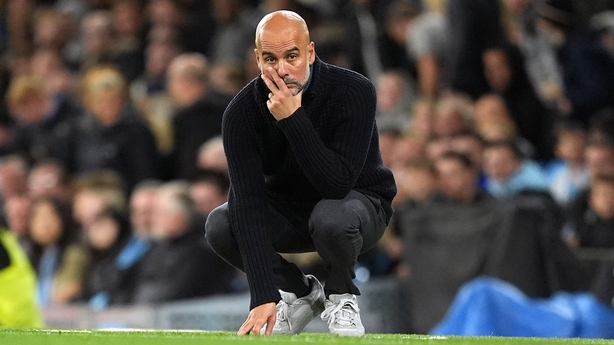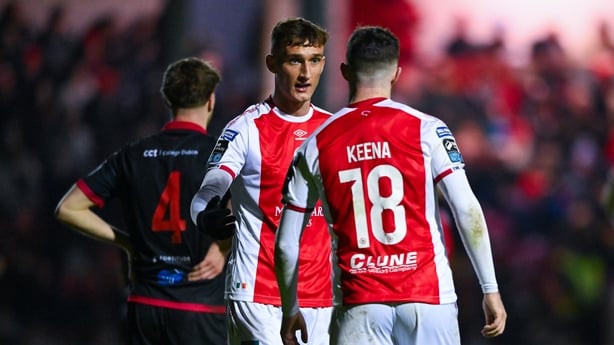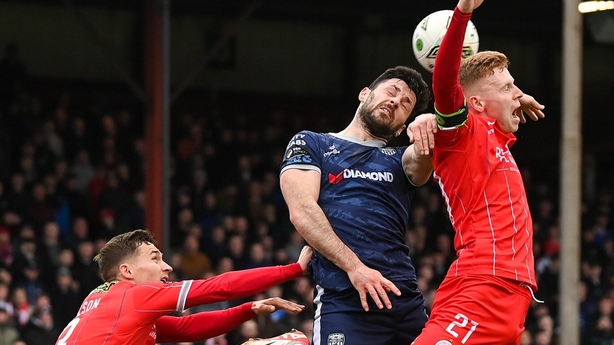For more than a decade, the footballing world was shaped by Pep Guardiola's blueprint, which placed an emphasis on positional play, strict regimented movements, and midfield overloads.
The decline of the traditional number nine seemed inevitable, as managers sought more control in the middle of the park, often deploying an extra midfielder at the expense of a second striker, sometimes deploying no striker at all.
However, the game is shifting again, and nowhere is this more evident than in the growing trend of teams opting to play with two strikers.
Manchester City, the epitome of controlled possession football under Guardiola, have subtly altered their style, adopting a more direct approach not seen under Guardiola before.
If Guardiola – the trendsetter of modern football – is playing this way, then change is in the air.
The pendulum has begun to swing back in favour of the striker, and clubs are responding accordingly.

The 4-4-2 formation, once the bedrock of football, has seen a resurgence, with managers realising that controlling possession means little if there aren't enough attacking options in the box to finish chances.
The game has always been cyclical; what was once deemed outdated often comes back into fashion.
Shelbourne and Derry City both lined up with two strikers in their game last weekend, as did Cork City, Sligo Rovers, and Waterford.
The shift is not only tactical but philosophical – managers are recognising the value of having two focal points in attack.
In Friday’s match at Tolka Park, Shelbourne’s forward duo of Mipo Odubeko and Sean Boyd were instrumental in unsettling Derry City’s defensive setup.
Boyd, with his physical presence, played as the ideal target man, while Odubeko’s pace stretched the backline.
It was a throwback to classic strike partnerships – the one long/one short combination – that used to dominate football in years gone by.
The results were evident, as Sean bagged two goals and Mipo was unlucky not to have at least two himself.
Derry City, in contrast, struggled to maximise their own striking partnership of Patrick Hoban and Liam Boyce.
Both are excellent strikers in their own right, but there was a lack of synergy in their movements, with both men often dropping deep rather than staying high and working off one another.
The effectiveness of a front two isn’t just about having two quality strikers; it’s about balance, chemistry, and a system that plays to their strengths.
Across the League of Ireland, teams are rediscovering the benefits of a strike partnership.
Cork City’s pairing of Seani Maguire and Ruairi Keating gave Galway United’s defence plenty to deal with last Friday, showcasing sharp link-up play and an ability to combine effectively in attacking sequences.
Maguire, a proven goalscorer, looked lively, while Keating’s workrate and movement complemented him well.
At Bohemians, Lys Mousset led the line on his own at the Aviva against Shamrock Rovers, but it’s expected that Colm Whelan will start to form a front two at times throughout the season.
Waterford, meanwhile, are benefiting from an experienced target man in Padraig Amond mentoring the young and talented Tommy Lonergan.
It’s an approach that doesn’t just help in the short term but also develops younger strikers who are learning from experienced campaigners.

The most intriguing development, however, is at Shamrock Rovers and St Patrick’s Athletic, where two of the brightest young talents in the country – Michael Noonan (16) and Mason Melia (17) – are set to lead the line for much of the season.
It’s a massive responsibility for two teenagers, but with the guidance of experienced mentors like Aidan Keena at St Pat's and Aaron Greene at Rovers, they will have the support they need to thrive.
What does this mean for the way games are played?
For starters, it suggests we will see more action in and around the penalty box.
A lone striker system often relies on wingers cutting inside or midfielders arriving late to supplement attacks, but with two strikers in play, defenders are constantly occupied.
Expect to see more direct play, more balls into the box, and more emphasis on providing service to strikers.
When a team plays with a single forward, the number nine is often isolated, forced to battle defenders, often without much support.
But with two up front, there is always an option to play off, to link up, and to combine in ways that make defences uncomfortable.
Managers who have embraced this shift will need to ensure they provide their forwards with the necessary service.
It’s not just about having two strikers; it’s about ensuring they are being fed properly.
Wingers and attacking midfielders will play an even bigger role, as the emphasis shifts towards delivering more crosses, playing incisive through balls, and exploiting spaces left by occupied centre-backs.
For years, football’s obsession with midfield control led to the decline of the traditional striker.
False nines, inverted wide players, and playmakers became the trend, and out-and-out goalscorers were deemed surplus to requirements.
But as we are witnessing now, the game is shifting again.

The return of the striker doesn’t mean the death of the midfield battle, but it does indicate a realisation that goals win games.
The last decade saw an over-reliance on intricate build-up play, often at the expense of cutting edge in front of goal.
Now, with two strikers leading the line, teams are rediscovering the value of having players whose primary focus is putting the ball in the net.
Whether this shift in tactics will be a long-term change or a short, temporary cycle remains to be seen.
But for now, the traditional centre-forward is back, and with teams across the League of Ireland embracing the front two once again, we might just be entering a new era where goalscoring strikers reclaim their importance in the game.
Listen to the RTÉ Soccer podcast on Apple Podcasts, Spotify or wherever you get your podcasts.


